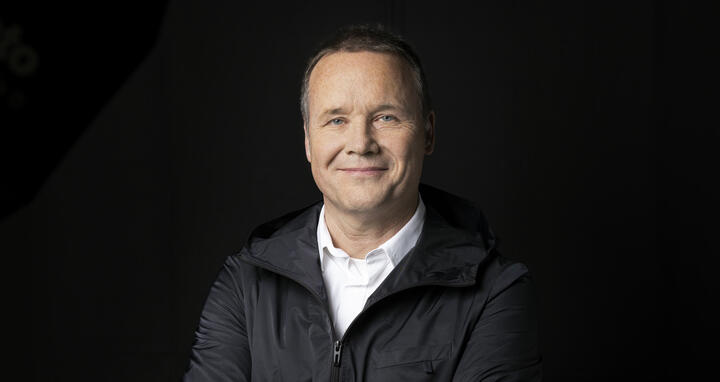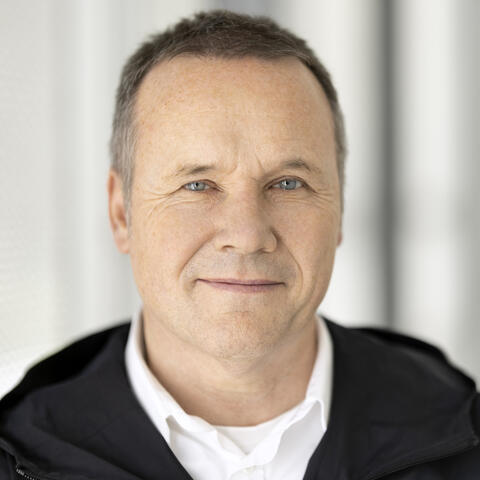Treating brain tumors with MRI
In oncology, magnetic resonance imaging (MRI) is typically used to detect tumors and potential metastases in cancer patients. Any heating of tissue that occurs during imaging is considered an unwanted side effect. Professor Thoralf Niendorf, Group Leader of the Experimental Ultra-High-Field MR lab at the Max Delbrück Center, views this heat differently: “We want to turn this supposed drawback into an asset – using the heat to destroy precisely hard-to-reach tumors, such as those in the brain,” he explains. “It’s similar to laser ablation, but with fewer risks for patients.”
The European Research Council (ERC) has awarded Niendorf a €150,000 grant to explore whether this lab-born concept can be translated into clinical use. The Proof of Concept (PoC) grant, which is doled out over a period of up to 18 months, is exclusively available to researchers who have previously been funded by the ERC. The proposed project must build on an earlier ERC-funded initiative and aim to bring innovative ideas into practical application. Niendorf is one of 150 scientists across Europe to receive a PoC Grant in the ERC’s first round of awards this year.
Broadband high-frequency antennas
Eight years ago, Niendorf received an ERC Advanced Grant – an award that enables top researchers to pursue high-risk projects over five years with up to €2.5 million in funding. With his grant, his aim was to use MRI to precisely and controllably raise the temperature of targeted body tissue to between 42 and 46 degrees Celsius. This therapeutic heating, or hyperthermia, has several applications. “For one, radiation and chemotherapy are known to work better in heated brain tissue,” Niendorf explains. “And secondly, we’ve encapsulated drugs in nanomolecules that release their payload only at specific temperatures. That means we could use MRI to deliver medication exactly where it’s needed, right at the tumor site.”
Thoralf Niendorf
With the new PoC funding, Niendorf now aims to develop a method for destroying brain tumors using MRI. “To do that, we need to heat the tumor tissue to more than 60 degrees Celsius,” he says. This is similar to what happens during laser ablation. However, that method requires drilling a hole in the skull to insert the laser probe near the tumor. It also carries risks, such as damaging nearby brain tissue or spreading cancer cells, which can lead to new tumor growth. “Our approach avoids these dangers,” Niendorf says. “It’s also essentially an all-in-one solution – our high-frequency antennas with broadband range allow us to plan, deliver, and monitor the therapy using a single technology.”
Accurate models of the human brain
Niendorf first plans to demonstrate that the method works through simulations. “Using MRI data from cancer patients, we’ve developed computer models that very closely resemble real-life conditions,” he says. For future lab-based validation, the team has built physical models of the human brain. These models contain different fluids that mimic the electrodynamic properties of healthy and cancerous brain tissue, and thus heat up in the same way.
“We’re still far from tapping the full potential of MRI in biomedical engineering,” Niendorf says. “Exploring these possibilities and developing them into new therapies is something I find incredibly exciting.” His enthusiasm is contagious – and has once again caught the attention of the ERC.
Text: Anke Brodmerkel
Further information
Photo for download
ERC grantee Thoralf Niendorf.
Photo: Pablo Castagnola, Max Delbrück Center
Contacts
Prof. Thoralf Niendorf
Head of the Experimental Ultrahighfield-MR lab
Max Delbrück Center
+49 30 9406-4504
thoralf.niendorf@mdc-berlin.de
Jutta Kramm
Head of Communication
Max Delbrück Center
+49 30 9406-2140
jutta.kramm@mdc-berlin.de or presse@mdc-berlin.de
- Max Delbrück Center
The Max Delbrück Center for Molecular Medicine in the Helmholtz Association aims to transform tomorrow’s medicine through our discoveries of today. At locations in Berlin-Buch, Berlin-Mitte, Heidelberg and Mannheim, our researchers harness interdisciplinary collaboration to decipher the complexities of disease at the systems level – from molecules and cells to organs and the entire organism. Through academic, clinical, and industry partnerships, as well as global networks, we strive to translate biological discoveries into applications that enable the early detection of deviations from health, personalize treatment, and ultimately prevent disease. First founded in 1992, the Max Delbrück Center today inspires and nurtures a diverse talent pool of 1,800 people from over 70 countries. We are 90 percent funded by the German federal government and 10 percent by the state of Berlin.







